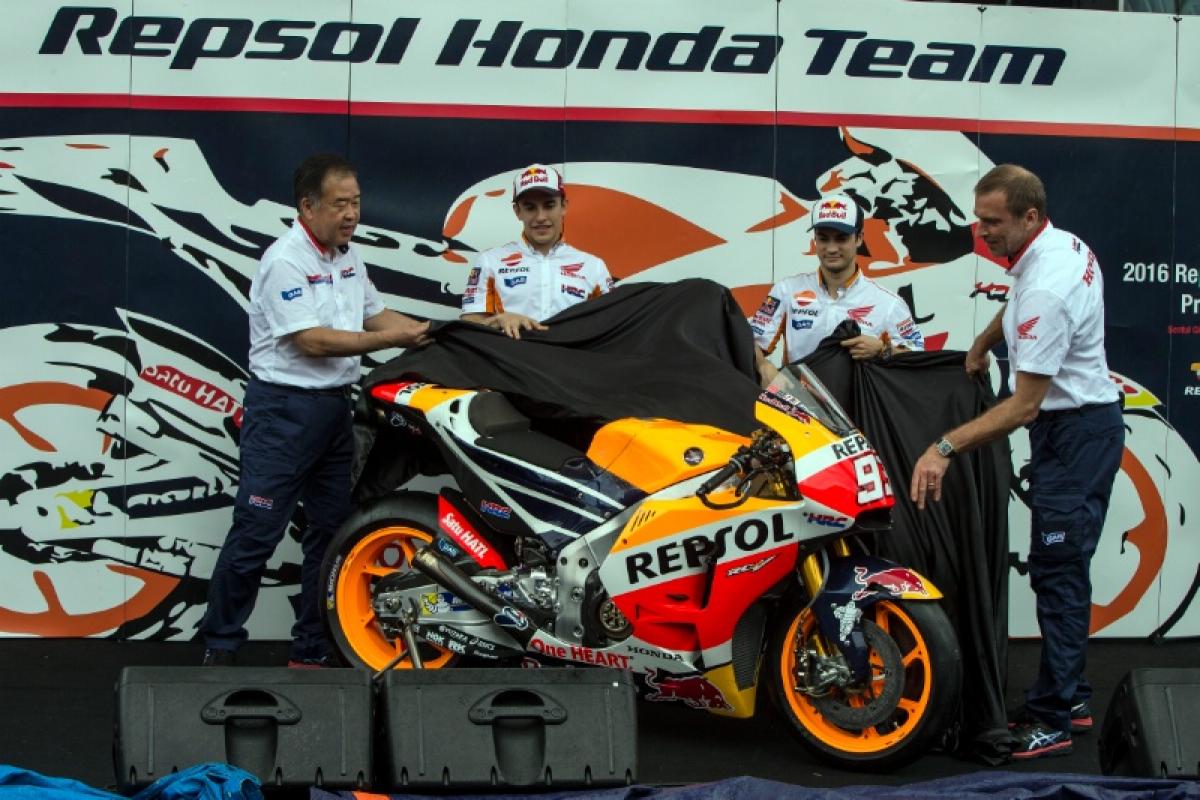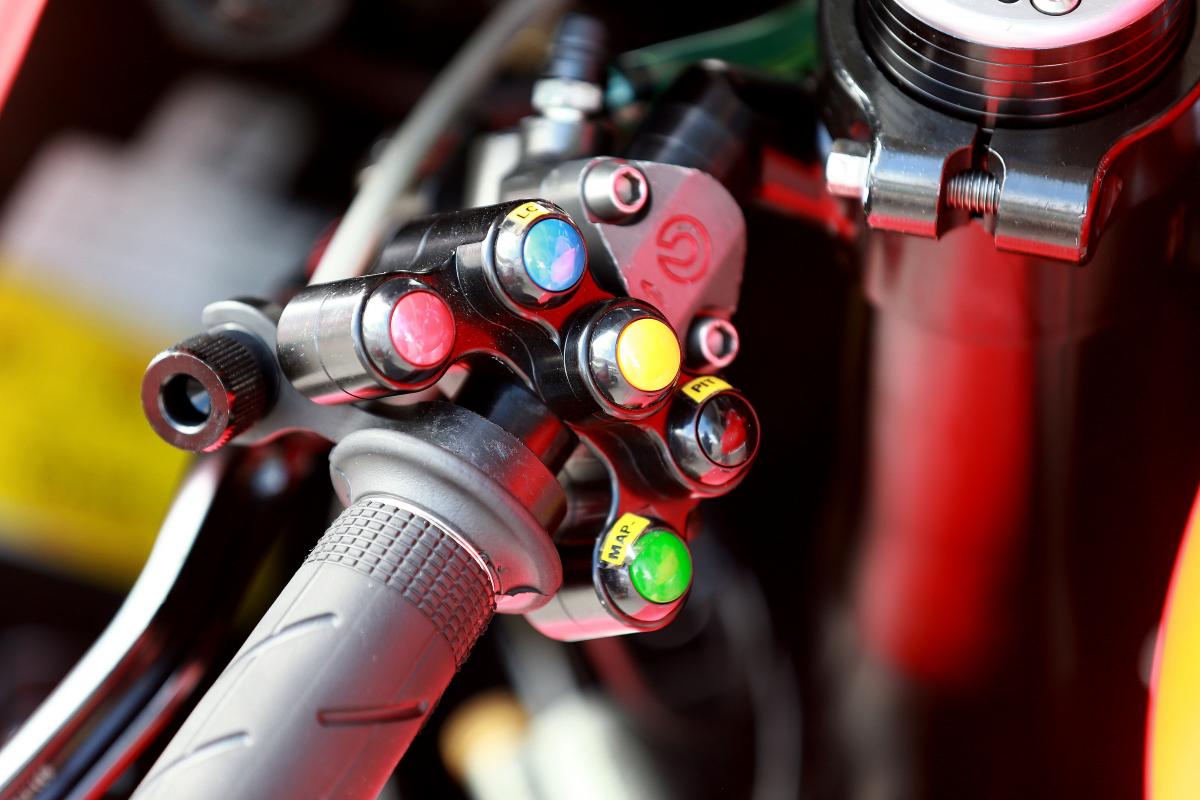MotoGP: No 'adaptive strategies' for single ECU

MotoGP's new unified ECU will not continuously adapt traction control and fuel consumption during a race.
Perhaps the most obvious example of such advanced factory technology came when Andrea Iannone accidentally put his Ducati into a wet setting - including traction control, wheelie control and torque delivery - at the start of the (dry) 2014 Spanish MotoGP at Jerez.
The Italian rode the whole race with the wet setting, but 'after three or four laps' the ECU was smart enough to adapt to the real track conditions. Iannone was able to recover from eleventh to sixth, matching the pace of third place Valentino Rossi by the closing stages.
Such self-learning will no longer be possible with the single ECU. Instead any options need to be programmed into the ECU before the start of the race. In the case of traction control, changes can only be made by the rider, using the buttons on the handlebar.
"Every Factory software in some way - and to some extent that we don't know - used adaptive strategies for tyre degradation and fuel consumption," MotoGP's Director of Technology, Corrado Cecchinelli, told Crash.net. "We don't have any of that in the unified software.
"The two main adaptive strategies you could introduce are firstly controlling the fuel consumption, which was an issue last year but is more-or-less a non-issue this year with the 22 litres. The second is doing something to the traction control strategies as the race goes on and the tyre grip is reduced.
"[For traction control] what we are doing at the moment is a very basic strategy that gives riders the opportunity to select a different map [on the handlebar]. This is not an adaptive strategy. What I mean by an adaptive strategy is that the software is able to register a drop in performance in the tyre because for instance in the same spot it is spinning more than before, so it adapts itself.
"There will also be no strategies that adapt fuel injection to the consumption. There will just be a sort of counter that will give you the information of the fuel consumption so that you can, in an open loop, tune your injection [before the race] if you think you are not going to make the full distance with 22 litres."
However the single ECU can still be set up for corner-by-corner adjustment over a single lap.
"We do have different software settings depending on the position of the bike on the track over one lap, but they are not self-adjusting as the race goes on," Cecchinelli confirmed.
"One clear example is if the friction of the surface is not the same all around the track. So the software does something different in one corner than in another corner because the friction coefficient is different. But this is not self-adapting. It is pre-set into the software."
With GPS banned in MotoGP, distance from each timing sector is used to estimate the position of the bike on the racetrack.
"Location is a tricky part of any software. What happens is that at every track you have three or four places which are used to split the circuit into sectors [for official timing]," Cecchinelli explained. "After passing each of these sector triggers, you start counting the wheel revolutions. From that you can calculate how far you have travelled and therefore where you are on the track.
"But by doing this you also introduce an error that increases the further away from the sector trigger you go, because the distance calculations are not perfect due to lean angle and so on. So the calculation resets itself after each sector trigger, three or four times per lap.
"That means it's really accurate at the start of each sector, then the amount of error increases until it resets again."
Even with the former factory software, machines occasionally got 'lost', usually due to an off track incident.
"When you run off the track you introduce a big 'error', and so the bike works like shit until you pass the next sector trigger... This is one of the trickiest failsafe strategies because you have to consider if you run off track, if the bike is switched off and on again, if there is a marshal pushing it, if you miss one of the sector triggers. A number of things can happen."
Indeed most of the Yamaha-Honda-Ducati development requests, to morph last year's Open ECU into the compulsory unified version, have been for 'failsafe' functions rather than performance.
"We are in the phase that is improving the so-called failsafe functions. Which means making the software better in case of malfunction," Cecchinelli said. "Which is different from looking for performance.
"The strategies we have now are not, as agreed, that different from those used by the Open class riders at the end of last season. There is no big reason why this software should be faster than the Open software. It is better in many ways - it works on many more machines, different engine configurations, it can handle pneumatic valve systems better, an exhaust valve for Ducati and also for failsafe - but it is not in theory faster. We did very few things so far to improve the performance."
And there are more updates to come before the new season begins under the floodlights in Qatar on March 20.
"A number of releases have been issued and delivered to the manufacturers and this process will continue forever because we will never get to a point where we will say development is over.
"We will always try to put new things in the software. It will always evolve based on our own recommendations or based on the manufacturers' input. So at the moment we have a certain version, but we already know it will not be the one on which we start the championship. That will be a newer version for sure."
Ducati is widely regarded to hold the early edge in terms of adjusting to the new ECU, although it was Movistar Yamaha riders Jorge Lorenzo and Valentino Rossi who topped the timesheets in Sepang.
Ducati's Gigi Dall'Inga acknowledges the factory has gained a 'small benefit' from its effort to develop the Open class system, an opportunity that was available to all manufacturers.
"I don't know if Ducati is more ahead, but if so I think the main reason would be that they spent more time on it because they were not doing something else, like fighting for the world championship," Cecchinelli commented.
"To my perception, Ducati was [also] the manufacturer that had a more 'factory' approach to the Open riders last year. And so they are more familiar with the software strategies, that are the same for this unified software."
Development of the new ECU will Continue during the second of the three official pre-season tests, at Phillip Island in Australia next week.
CLICK HERE to read the full interview with Corrado Cecchinelli...


